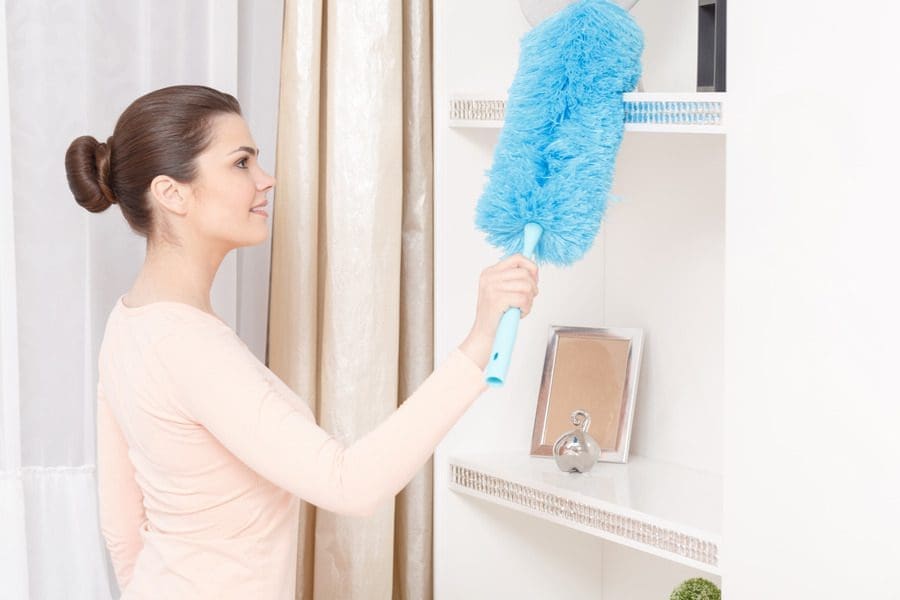You know that glorious part of the day when the sun is illuminating your favorite room of the house with golden beams? But then you start to look around and are horrified by the amount of dust on your tables, floors, and lamps. And then you think about how your allergies have been acting up, and you start to connect the dots. There are several culprits when it comes to dust buildup. Let’s discuss why your house gets so dusty and what you can do to combat it.
Possible Culprit: A Faulty HVAC System
When dust enters your home, your HVAC system should be the first line of defense. The system should suck dust particles through the vents and trap them in your air filters, but your HVAC system can’t do its job if your filters are dirty or ductwork is leaking. Replace your dust filters every three months or as frequently as the manufacturer recommends. If you think the problem is more severe than your filters, call a professional to check things out.
Possible Culprit: Upholstery, Curtains, and Carpets (Oh My!)
Dust mites find refuge in mattresses, pillows, and upholstery. But you can combat this by investing in allergy encasings to prevent new dust mites from settling. They also love curtains. So you can also opt for shutters or blinds instead of curtains, dry clean your curtains more frequently, or invest in machine-washable ones. Dust mites love carpets and rugs, too. If removing all of your carpets isn’t an option, ensure you have them cleaned regularly to keep dust at bay.
Possible Culprit: Leaky Doors and Windows
Drafty doors and windows often lead to higher energy and gas bills, but they are also good at letting dust in. And if you live on a gravel road or busy street, you’ll notice extra dust in spaces. Make sure your windows and doors are sealed to keep out the dust.
Possible Culprit: Your Vacuum
If you audibly gasped, you aren’t alone. Many people assume that dust problems will be long gone if you vacuum every day. However, if your vacuum is old or on the fritz, there’s a chance your vacuum has been releasing excess dust into the air. If you’re due for a new vacuum, buy one with a high-efficiency particulate air (HEPA) filtration system, or consider a wet vacuum, which traps dust in a water container to prevent it from going airborne.
Extra Tips
Aside from fixing the issues above, you can do a few other things to keep the dust accumulation at an all-time low.
- Take your shoes off when you enter your home to keep dust from getting tracked all over your house.
- Chase your clothes before you go to bed.
- Bathe your fur babies or get them to the groomers more frequently to reduce the amount of pet dander.
- Start cleaning at the top of the room and work your way down. When you’re ready to hit the floors, most of the dust is there.
- If you’re using a dry cloth to dust, there’s a good chance you’re just moving dust around. Instead, use a damp microfiber cloth.
- Don’t forget to wipe down fan blades, walls, and baseboards. These areas often have a lot of dust buildup and are easily forgotten.
- Invest in an air purifier to draw out dust from your indoor air. If you have a smaller home, one purifier may do the trick, whereas if you have a larger space, you may need a few to work.







